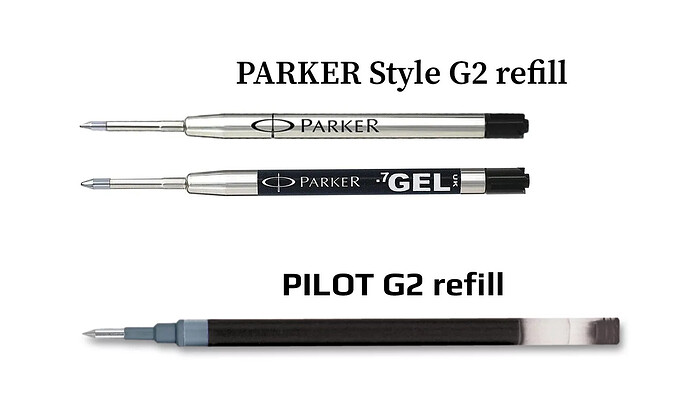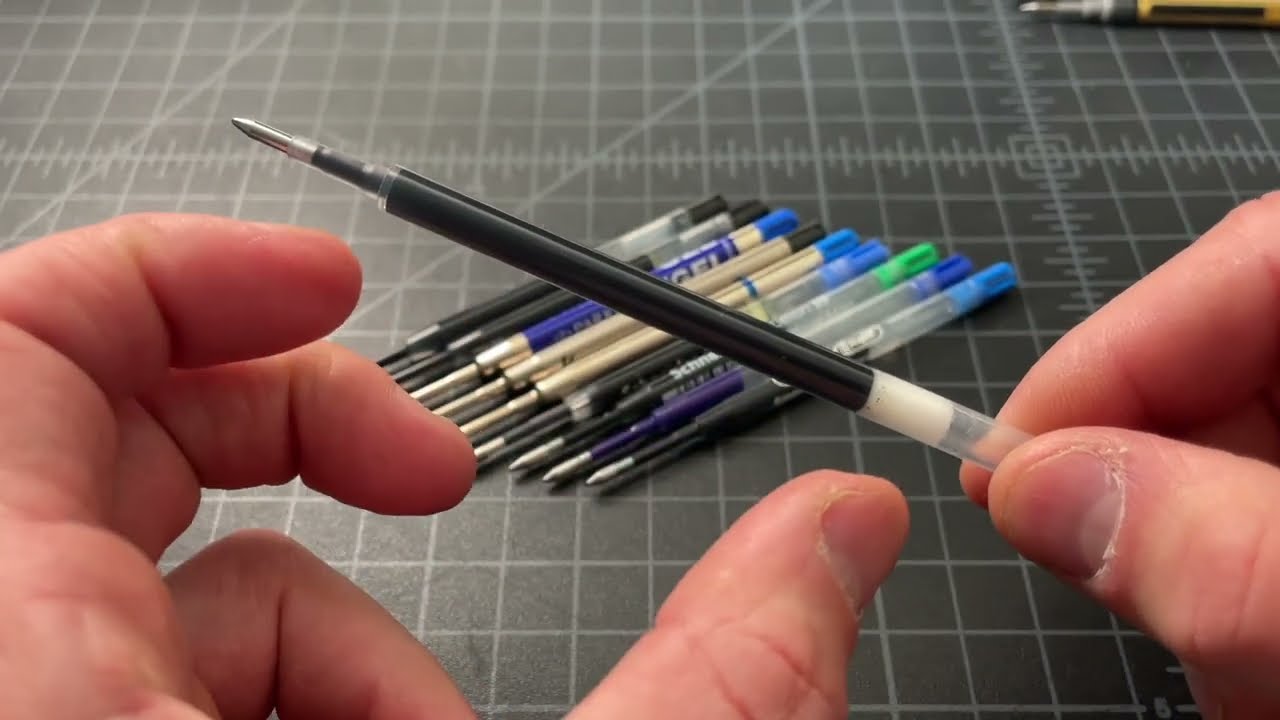If you happen to enjoy using a vintage pen that uses a very popular refill, you’re in luck. You’ll likely never have to worry about running out. The Parker G2 and the PILOT G2 are probably the most popular ones around, and numerous brands make refills by these specifications. The Parker G2 is generally for click action retractable ballpoints and the PILOT G2 is for capped pens. Yes, they’re different and still use “G2” in labeling. Parker has it right (matches ISO standard), and in fact “capless Parker Style” is often how it’s referenced. PILOT in Japan uses “G2” for a longer style refill.
If you are in the habit of owning and using vintage pens that take ink refills not commonly found, then your best bet is to keep a reasonable stock inventoried (but not too much, as ink does have a shelf-life) and to keep tabs on viable alternates. Write it all down; the brand, model number, and source(s). You’ll thank yourself later.
One other thing I recommend is to not throw out used up or dried out ink refills. Old plastic refills can be handy for cannibalizing parts, usually the back-end plug. Such plugs are useful as spacers. Also, if you have a refill with 10mm or more tubing with no ink visible, trim that off and keep aside for future custom sized spacers. In some cases, an old refill, particularly with a metal body, can be used as a holder for a D1 refill to create a DIY substitute ink refill. In some cases, refills come with a nicely sized sturdy “cap” covering over the tip. Those can come in handy. In one case, I used a LAMY M22 refill cap as a perfect spacer in a PILOT Hi-Tecpoint pen.
Of course the natural question is… can those writing tips ever be reused? Usually not. While paper is a forgiving medium to write upon, sufficient use can eventually wear down tips, like warping or distorting the ball that ends up creating lines that aren’t perfectly smooth. Extremely fine but abrasive debris can also cause tip damage. Also, removing a working tip and inserting it on another refill as a swap usually won’t work because an air pocket will be created. That’s like air in the blood–a death sentence for the refill. The ink just won’t flow.
In some rare cases, an old refill can be “brought back to life” and begin writing again. Usually only temporary. Over time ink will thicken and no longer flow properly. Heating up a refill with a metal casing can help liquefy the ink and cause it to clump together for even flow. But usually that ink won’t last a page or more. The problem is the ink formulation is just no longer as it originally was and won’t flow well. But the lighter trick on a ballpoint tip can restore writing for a little while, if needed in a pinch. Just be mindful of plastic shafts/bodies, as they will soften and distort, or the metal tip will fall off. In some cases, soaking a refill in boiling hot water can help coerce the ink to reflow again and overcome possible gaps to restore proper flow. But it’s also common for separation to happen again.
There are a number of great resources online. Here’s just a few:
USharpen Pen Refill Guide
Pen Heaven UK Pen Refill Finder and Guide
USharpen video on best Parker style refills 2023

